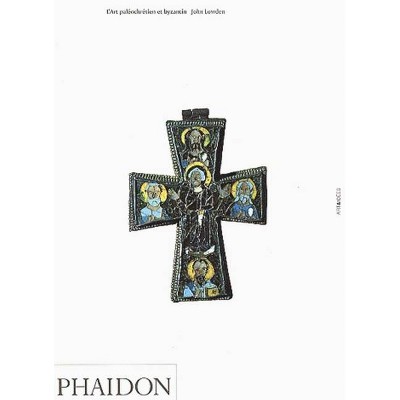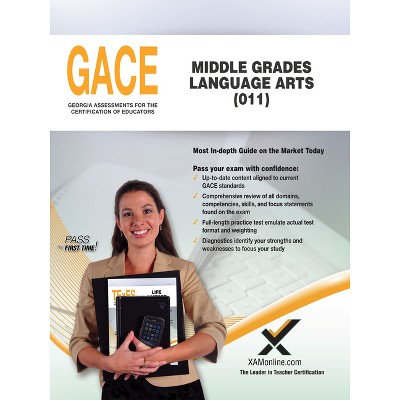Sponsored

Cosmos, Liturgy, and the Arts in the Twelfth Century - (Middle Ages) by Margot E Fassler (Hardcover)
In Stock
Sponsored
About this item
Highlights
- In Cosmos, Liturgy, and the Arts in the Twelfth Century, Margot E. Fassler takes readers into the rich, complex world of Hildegard of Bingen's Scivias (meaning "Know the ways") to explore how medieval thinkers understood and imagined the universe.
- About the Author: Margot E. Fassler is Keough Hesburgh Professor of Music History and Liturgy at the University of Notre Dame and Robert Tangeman Professor of Music History, Emerita at Yale University.
- 392 Pages
- Music, History & Criticism
- Series Name: Middle Ages
Description
About the Book
"In Cosmos, Liturgy, and the Arts, Margot E. Fassler unfurls the ways in which Christian theologians and scientists in the twelfth century thought about the universe, not only in their treatises and scientific calculations, but also in their ecclesiology, their visual arts, music, poetry, and drama. It is only through accounting for all these dimensions of understanding that a sense of the whole can be achieved, for this work, Fassler shows, the Benedictine nun Hildegard of Bingen and her Scivias, her collection of twenty-six religious visions, offer a unique and skillful guide. Fassler examines the connections between Hildegard's formation as a nun, the ways in which she would have experienced and understood the liturgy, and the medieval liturgy's cosmological underpinnings. Exploring how the Feast of All Saints, the day of the nuns' consecration, informs Scivias, Fassler leads readers through the six stages of creation, or the hexameron, as Hildegard understood them, beginning with her beliefs about time before time and matter before matter. Her hexameron is rooted in her own creation as a consecrated virgin, divinely commissioned to write down her visions, the most famous of which presents the universe as "a huge form, rounded and shadowy, and shaped like an egg" from which all emerges until that point at which, its God-given purpose fulfilled, it ceases to exist. Though this view of the cosmos, its creation and workings, is far removed from modern understandings, Fassler's analysis reveals how Hildegard's dynamic and systematic understanding resonates with contemporary issues in a surprising number of ways. To know Hildegard's views both as expressed in this treatise and in its illuminations and songs is to gain otherwise unattainable knowledge about the past and about medieval cosmological investigations in their multidisciplinary splendor"--Book Synopsis
In Cosmos, Liturgy, and the Arts in the Twelfth Century, Margot E. Fassler takes readers into the rich, complex world of Hildegard of Bingen's Scivias (meaning "Know the ways") to explore how medieval thinkers understood and imagined the universe. Hildegard, renowned for her contributions to theology, music, literature, and art, developed unique methods for integrating these forms of thought and expression into a complete vision of the cosmos and of the human journey. Scivias was Hildegard's first major theological work and the only one of her writings that was both illuminated and copied by scribes from her monastery during her lifetime. It contains not just religious visions and theological commentary, but also a shortened version of Hildegard's play Ordo virtutum ("Play of the virtues"), plus the texts of fourteen musical compositions.
These elements of Scivias, Fassler contends, form a coherent whole demonstrating how Hildegard used theology and the liturgical arts to lead and to teach the nuns of her community. Hildegard's visual and sonic images unfold slowly and deliberately, opening up varied paths of knowing. Hildegard and her nuns adapted forms of singing that they believed to be crucial to the reform of the Church in their day and central to the ongoing turning of the heavens and to the nature of time itself. Hildegard's vision of the universe is a "Cosmic Egg," as described in Scivias, filled with strife and striving, and at its center unfolds the epic drama of every human soul, embodied through sound and singing. Though Hildegard's view of the cosmos is far removed from modern understanding, Fassler's analysis reveals how this dynamic cosmological framework from the Middle Ages resonates with contemporary thinking in surprising ways, and underscores the vitality of the arts as embodied modes of theological expression and knowledge.Review Quotes
"Cosmos, Liturgy, and the Arts in the Twelfth Century is a work of immense creativity and vision, displaying Fassler at the peak of her synthetic powers. In it, she brings to light Hildegard's coherent (and unique) mode of describing and understanding the universe -- as represented in the illuminated Scivias (literally, 'know the ways') -- to amplify and deepen our picture of 'the grander scheme of knowing' in the twelfth century. Hildegard, and through her Fassler, are dealing with the deepest mysteries of the cosmos."-- "Journal of Religious History"
"Fassler takes readers into the rich, complex world of Hildegard of Bingen's Scivias to explore how medieval thinkers understood and imagined the universe...Though Hildegard's view of the cosmos is far removed from modern understanding, Fassler's analysis reveals how this dynamic cosmological framework from the Middle Ages resonates with contemporary thinking in surprising ways, and underscores the vitality of the arts as embodied modes of theological expression and knowledge."-- "Studi Medievali"
"Margot Fassler is the most important Hildegard scholar now writing in the United States, and this book has been long awaited."-- "Barbara Newman, Northwestern University"
"Margot Fassler's fascinating new book opens up for readers the deeply creative work of Hildegard of Bingen, as this medieval Benedictine nun articulates a vision of the cosmos, creation, and worship of God all intertwined. What emerges in Fassler's study of Hildegard's Scivias--its texts, music, and images--is a feast for the senses as well as for the imagination."-- "Teresa Berger, Yale Divinity School"
About the Author
Margot E. Fassler is Keough Hesburgh Professor of Music History and Liturgy at the University of Notre Dame and Robert Tangeman Professor of Music History, Emerita at Yale University.
















